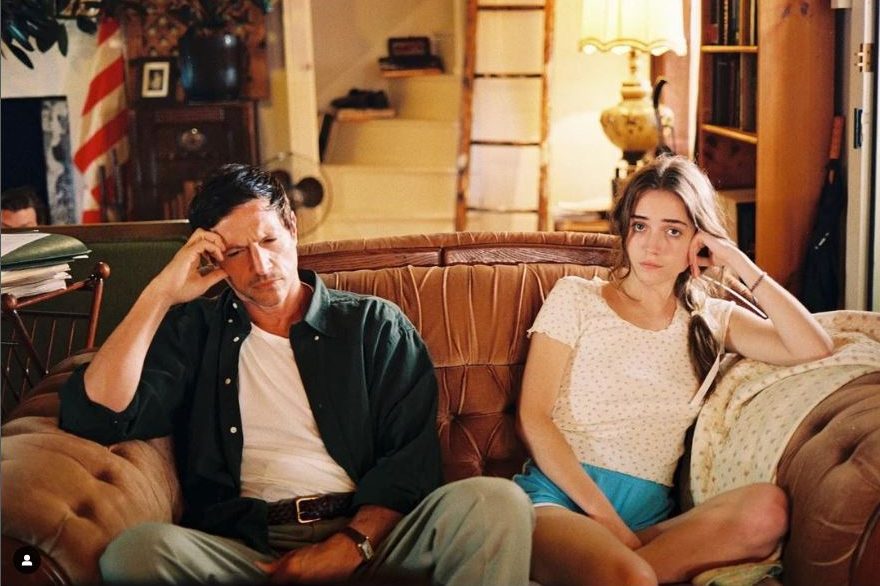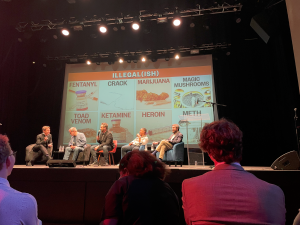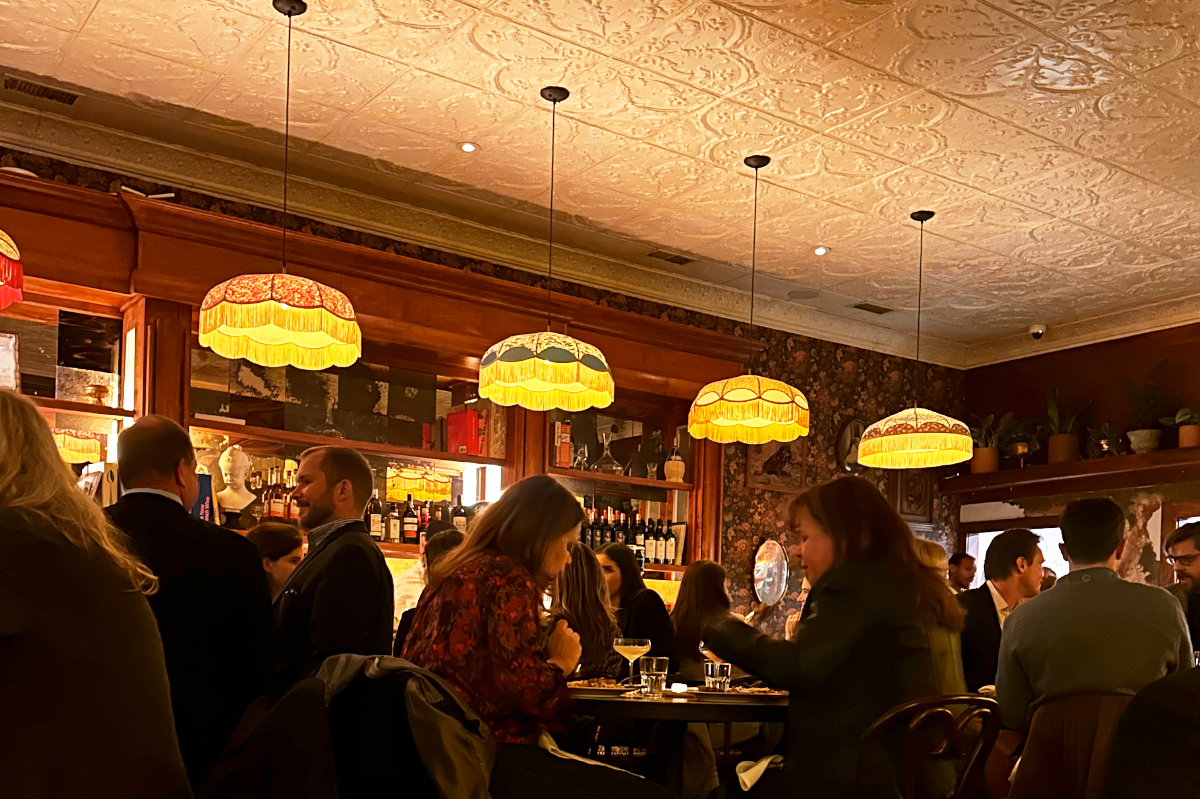What would an American odyssey look like today? There are too many rabbit holes to go down, too many traps. Besides our fractious politics, everything in 2020s America is busted. Broken self-checkout machines and petty theft are scapegoats for a spiritual and economic crisis — it feels like the end of the world could come at any moment. Non-linear digital media and smartphones have destroyed the monoculture of popular movies and television that used to gird our pop culture. Everyone can find their own niche now, but we have so little to talk about together — not even the dread permeating the country. And it’s been this way for the better part of a decade.
The Sweet East presents the most accurate, from-the-front picture of America today. Sean Price Williams’s directorial debut is a Super-16 Molotov cocktail, a movie blowing a wad of recent American afflictions, neuroses and obsessions. Talia Ryder stars as Lillian, a high school senior on a field trip who aimlessly wanders off and ends up on an Oz-like journey throughout the East. Stranded in Washington, DC, she ends up in a pizza parlor where a militiaman (Andy Milonakis) enters and fires into the ceiling, demanding to see “the basement.” Before he can “free the children,” Lillian escapes to the bathroom downstairs and sings over the opening credits in a gorgeous close-up against a mirror.
A punk, one of many short-term friends she meets, comes downstairs and shows her “the basement,” along with its secret tunnels (“They looked so much bigger when I was a kid”). From a basement on Capitol Hill, Lillian discovers America through a rotating cast of schemers, cultists, opportunists and terrorists. There’s Lawrence (Simon Rex), a white supremacist trying to keep his job as an academic; Molly (Ayo Edebiri) and Matthew (Jeremy O. Harris), filmmakers desperate for an unknown actress in their period drama out in the country; Jacob Elordi shows up as Ian, her famous Aussie co-star; Mohammed (Rish Shah) gives her a shack to hide out in while the whole Northeast looks for her; and in the end, it’s Preacher Gibby Haynes who tells Lillian that her journey has come to an end for now.
From the opening wide shot of suburban Maryland superimposed with the green sign for “Marathon Street,” to the apocalyptic football finale, The Sweet East sprints through a collapsing empire with more flourish and skill than any other piece of cultural commentary in recent memory. Lillian takes us through the fall of America, the erosion of our intellectual and pop cultures and a celebration of everything too fringe to survive under neoliberalism. She meets who many parents would call “suspicious characters” throughout the film, but she’s never hurt or traumatized by any of them, and in nearly every situation, she’s the one in control. She’s an observer, a blank slate that our country’s narcissists can project themselves onto with alarming speed.
Ryder remains untouched. She’s a witness to the insanity and nihilism in our country right now, apathetic and too drained to care about much at all. Lillian doesn’t get excited; she’s up for whatever. The most intimate and romantic sequence in the film is the credits, when she’s singing to herself in a mirror. No connections and no friendships form across these specific and wildly diverse cliques of new artists, prophets and kings. In the end, Lillian is left where she started: with her family, watching the world end on television just like everyone else.
The Sweet East is a major American film, directed and photographed with an immediacy and physicality utterly lacking in contemporary American cinema. Some will call it a “hangout movie,” others plotless, but they’re missing the point: The Sweet East is a film from the front. Sean Price Williams’s mosaic of a movie has captured 2020s America for the first time.




















